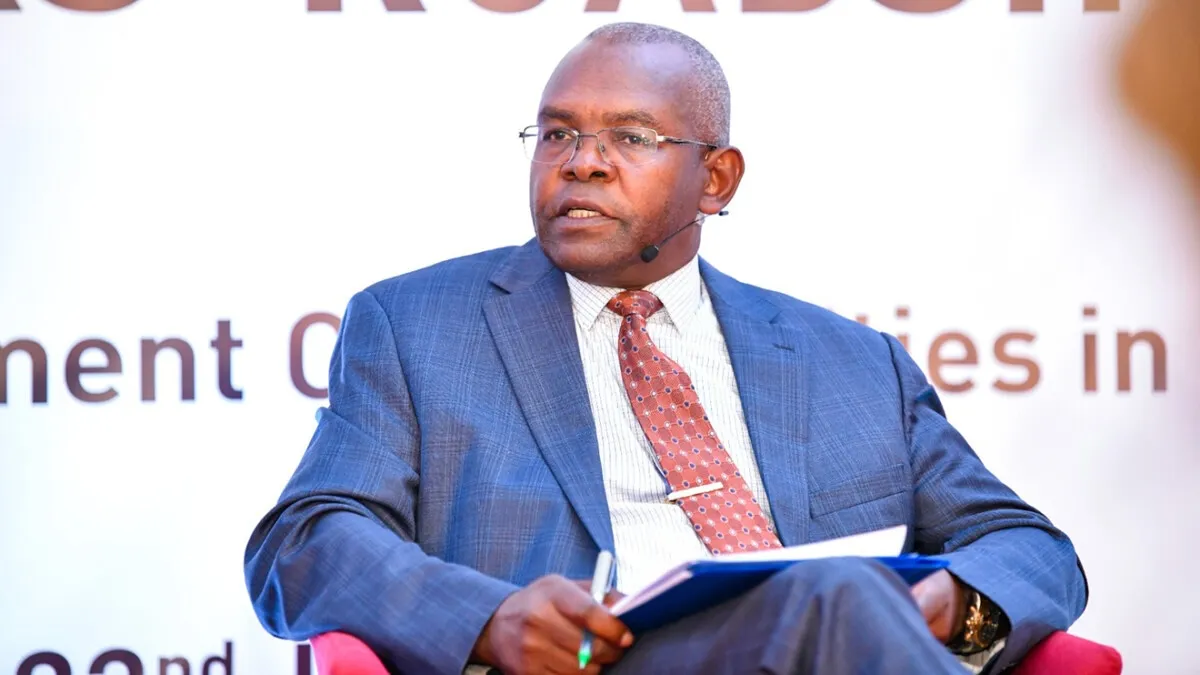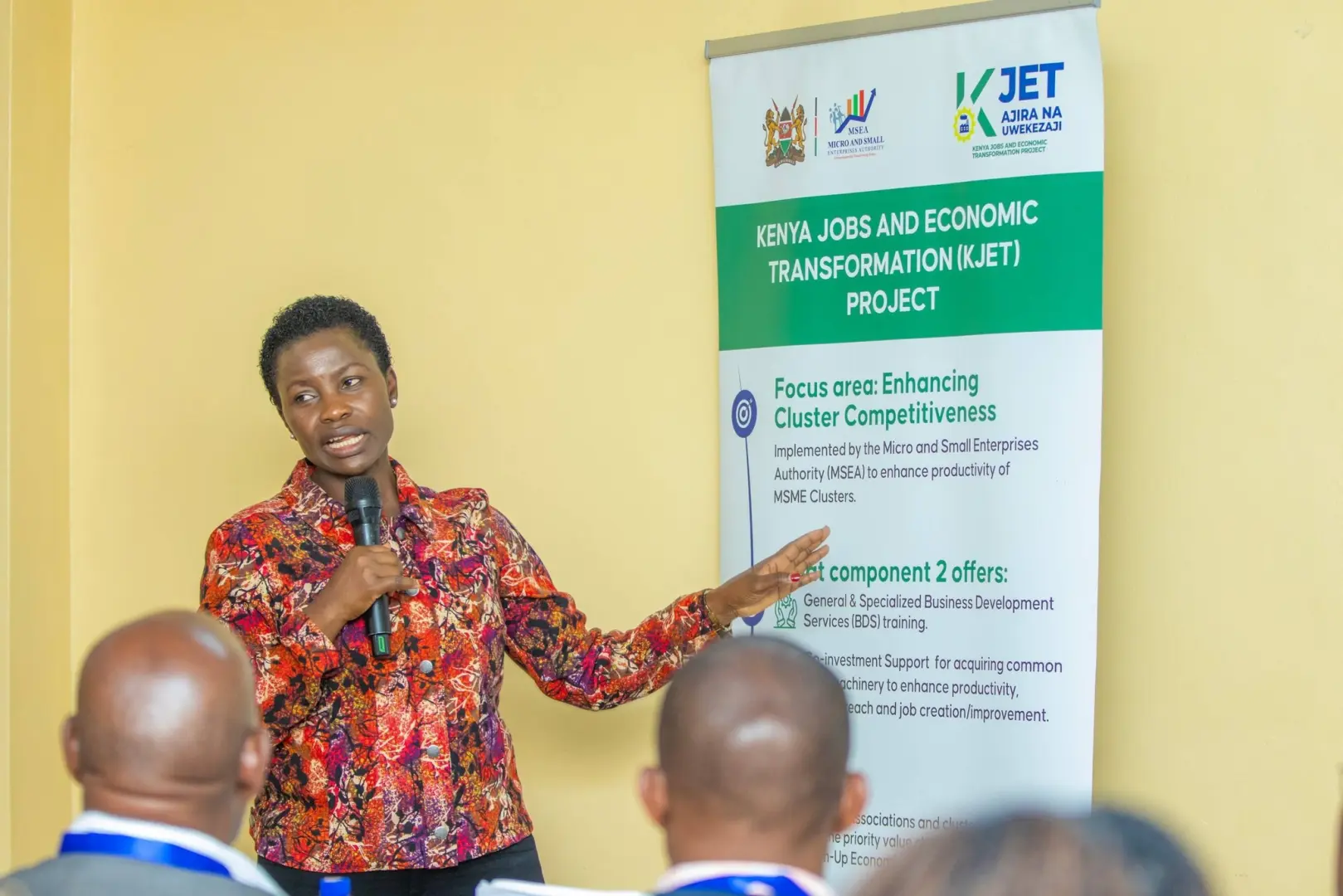The Central Bank of Kenya (CBK) has introduced a transformative reform in the country’s money market with the launch of the Kenya Shilling Overnight Interbank Average (KESONIA), which officially came into effect on September 1, 2025. This landmark development represents a major milestone in efforts to enhance transparency, efficiency, and stability in Kenya’s domestic financial system while positioning the country alongside developed economies with sophisticated benchmark rate systems.
The introduction of KESONIA comes at a critical juncture for Kenya’s financial sector, as the country seeks to strengthen its position as East Africa’s leading financial hub while navigating global economic uncertainties and regional integration challenges.
Build the future you deserve. Get started with our top-tier Online courses: ACCA, HESI A2, ATI TEAS 7, HESI EXIT, NCLEX-RN, NCLEX-PN, and Financial Literacy. Let Serrari Ed guide your path to success. Enroll today.
Understanding KESONIA: Kenya’s Answer to Global Benchmarks
For years, Kenya’s interbank market has relied on informal overnight lending rates among commercial banks to gauge liquidity conditions. However, the absence of a formalized benchmark created significant challenges for market participants and policymakers seeking clear, consistent measures of short-term borrowing costs. With KESONIA, CBK now provides a standardized reference rate for the overnight interbank market, effectively aligning Kenya’s financial infrastructure with international best practices established by major global financial centers.
The new benchmark follows the model of established international rates such as the Federal Reserve’s Secured Overnight Financing Rate (SOFR), which replaced the scandal-ridden London Interbank Offered Rate (LIBOR) as the primary U.S. dollar reference rate, and the European Central Bank’s Euro Short-Term Rate (€STR). These global transitions have been driven by the need for more transparent, transaction-based benchmarks following the LIBOR manipulation scandals that rocked international financial markets throughout the 2010s.
The development of KESONIA also reflects Kenya’s commitment to implementing recommendations from international financial standard-setting bodies, including the Financial Stability Board (FSB) and the International Organization of Securities Commissions (IOSCO), which have advocated for robust benchmark reforms worldwide.
Early Performance Indicators Show Smooth Market Integration
According to CBK’s latest market bulletin, by September 11, 2025, KESONIA stood at 9.45 percent, representing a marginal decline from the 9.48 percent recorded a week earlier. This stability during the benchmark’s inaugural weeks suggests that market participants are adapting well to the new system without experiencing significant disruptions to their trading operations.
The average number of interbank transactions rose slightly to 21 deals per day, compared to 20 the previous week, while the average value traded remained steady at KSh 11.4 billion. These indicators demonstrate that the new benchmark is being smoothly integrated into market operations without disrupting existing liquidity conditions or established trading patterns among Kenya’s commercial banks.
The consistent trading volumes indicate healthy market participation, with Kenya’s major financial institutions including KCB Group, Equity Bank, Cooperative Bank of Kenya, Standard Chartered Bank Kenya, and ABSA Bank Kenya actively contributing to the benchmark’s calculation through their daily interbank transactions. This broad-based participation ensures that KESONIA accurately reflects market-wide conditions rather than the trading patterns of a limited number of institutions.
Strategic Policy Tool for Enhanced Monetary Transmission
According to CBK Governor Kamau Thugge, the introduction of KESONIA represents far more than a technical adjustment—it serves as a crucial policy tool aimed at improving the monetary policy transmission mechanism. By providing a reliable and transparent benchmark, the central bank can better monitor liquidity trends, assess the effectiveness of its policy decisions, and communicate market conditions more clearly to stakeholders.
Commercial banks now gain clearer pricing signals for interbank borrowing and lending activities, which supports greater predictability in interest rate movements across the broader economy. This enhanced transparency extends from government securities markets to private sector credit, creating a more coherent interest rate structure throughout Kenya’s financial system.
The timing of KESONIA’s launch coincides with CBK’s ongoing efforts to maintain price stability while supporting economic recovery. Kenya’s inflation rate has remained within the central bank’s target range of 2.5% to 7.5%, currently standing at approximately 4.4% as of August 2025, providing a stable macroeconomic environment for the benchmark’s successful introduction.
The central bank’s policy rate currently stands at 12.75%, following a series of adjustments aimed at containing inflationary pressures while supporting economic growth. KESONIA will provide policymakers with more granular data on how monetary policy decisions impact short-term money markets, potentially improving the precision of future policy interventions.
Boosting Investor Confidence and Market Credibility
KESONIA is expected to significantly enhance both domestic and international investor confidence in Kenya’s financial markets. Benchmark rates serve as critical barometers of financial market health, and international investors often use these indicators to assess country risk, evaluate investment opportunities, and make strategic allocation decisions.
With a credible interbank reference rate in place, Kenya strengthens its position in regional financial markets, potentially making it easier to attract foreign capital flows and deepen domestic market activity. This development is particularly relevant given Kenya’s ambitious infrastructure projects, including the ongoing construction of the Standard Gauge Railway and various renewable energy initiatives, which require substantial capital investments.
The enhanced credibility could prove beneficial for Kenya’s sovereign bond issuances in international markets, where investors scrutinize the transparency and sophistication of domestic financial infrastructure when assessing credit risk and pricing securities. Kenya’s Eurobond portfolio, currently totaling approximately $3.5 billion across various maturities, could benefit from improved market confidence stemming from stronger financial market infrastructure.
International rating agencies, including Moody’s, Standard & Poor’s, and Fitch Ratings, often consider financial market development and transparency when evaluating sovereign credit ratings. The introduction of KESONIA demonstrates Kenya’s commitment to international best practices and could positively influence future rating assessments.
One decision can change your entire career. Take that step with our Online courses in ACCA, HESI A2, ATI TEAS 7, HESI EXIT, NCLEX-RN, NCLEX-PN, and Financial Literacy. Join Serrari Ed and start building your brighter future today.
Regional Context and Competitive Positioning
Kenya’s introduction of KESONIA places it at the forefront of financial market development in East Africa, ahead of many regional peers who still lack formalized interbank benchmarks. While South Africa has long maintained sophisticated benchmark systems including the South African Benchmark Overnight Rate (SABOR), most sub-Saharan African countries continue to operate without standardized reference rates.
This development reinforces Kenya’s position as a financial leader in the East African Community (EAC), potentially accelerating regional financial integration initiatives under frameworks such as the East African Monetary Union (EAMU). The benchmark could serve as a model for other EAC member states considering similar reforms, particularly as regional trade and investment flows continue expanding under the African Continental Free Trade Area (AfCFTA) framework.
The Nairobi Securities Exchange (NSE), one of Africa’s most active stock markets with a market capitalization exceeding $20 billion, stands to benefit from improved market infrastructure. Enhanced benchmark rates could facilitate the development of more sophisticated financial products, including interest rate derivatives and structured products that rely on reliable reference rates.
Market Conditions Supporting Successful Implementation
The launch of KESONIA comes during a period of relative stability in Kenya’s financial markets, despite ongoing global economic headwinds including persistent inflation concerns in major economies, supply chain disruptions, and geopolitical tensions affecting international trade patterns.
Liquidity conditions in Kenya’s banking sector remained adequate during the benchmark’s initial implementation period, with commercial banks holding excess reserves of KSh 20.6 billion above the statutory cash reserve requirement of 4.25%. This comfortable liquidity position has provided a stable foundation for adopting the new rate without triggering market volatility or disrupting normal banking operations.
The resilient liquidity conditions reflect the overall strength of Kenya’s banking sector, which has maintained robust capitalization levels with an average core capital ratio of approximately 17.1% as of June 2025, well above the regulatory minimum of 10.5%. The sector’s asset quality has also shown improvement, with the gross non-performing loans ratio declining to 13.8% as of June 2025 from previous highs.
Kenya’s banking sector comprises 39 commercial banks, 13 microfinance banks, one mortgage finance company, and eight representative offices of foreign banks, creating a diverse and competitive landscape that supports effective benchmark rate formation.
Technical Framework and Calculation Methodology
KESONIA follows international best practices in its calculation methodology, incorporating actual transaction data from interbank trades rather than relying on indicative quotes or theoretical estimates. The rate is calculated as a volume-weighted average of all eligible overnight interbank transactions, ensuring that it accurately reflects prevailing market conditions rather than hypothetical pricing.
The benchmark encompasses transactions between commercial banks, development finance institutions, and other eligible market participants, with strict criteria ensuring that only bona fide market transactions are included in the calculation. This approach mirrors the methodology used by major international benchmarks and helps ensure the rate’s integrity and representativeness across market cycles.
CBK publishes KESONIA daily at 9:00 AM East Africa Time, providing market participants with timely and consistent information for pricing decisions, risk management activities, and portfolio valuation purposes. The central bank also publishes detailed methodology documents and regular market updates to ensure transparency and maintain market confidence in the benchmark.
The technical infrastructure supporting KESONIA includes robust data collection systems, validation procedures, and contingency mechanisms to ensure continuous publication even during periods of limited market activity or technical disruptions.
Future Implications and Long-term Vision
Looking ahead, the success of KESONIA will depend largely on sustained market participation, consistent calculation methodology, and its reliability as a benchmark across various market cycles and economic conditions. Financial analysts note that if effectively managed and widely adopted, KESONIA could become the cornerstone of Kenya’s short-term money market infrastructure, similar to how SOFR and other established benchmarks serve in international markets.
The benchmark’s introduction also paves the way for developing derivative products and more sophisticated financial instruments linked to short-term interest rates. This could include overnight index swaps (OIS), forward rate agreements (FRAs), and other derivatives that would deepen Kenya’s financial markets and provide additional risk management tools for market participants.
Furthermore, KESONIA could facilitate the development of Kenya’s corporate bond market by providing a reliable reference rate for floating-rate securities and improving pricing transparency across the yield curve. The corporate bond market in Kenya, while growing, remains relatively underdeveloped compared to government securities markets, and improved benchmark infrastructure could catalyze expansion.
Regulatory Oversight and Governance Framework
CBK has established a comprehensive governance framework for KESONIA, including an oversight committee comprising representatives from major market participants, independent experts, and central bank officials. This structure ensures that the benchmark remains representative of market conditions and maintains its integrity over time.
The oversight framework includes regular reviews of the calculation methodology, monitoring of market participation levels, and assessment of the benchmark’s performance during various market conditions. CBK has also implemented robust audit procedures and external validation processes to maintain transparency and credibility.
Conclusion: A New Chapter for Kenya’s Financial Markets
In summary, the introduction of KESONIA represents a critical evolution in Kenya’s monetary and financial landscape. By providing a clear, transparent, and standardized benchmark for interbank transactions, CBK is laying the groundwork for a more predictable interest rate environment, stronger investor confidence, and a modernized financial market framework that supports sustainable economic growth.
The successful implementation of KESONIA positions Kenya as a regional leader in financial market development and demonstrates the country’s commitment to international best practices. As the benchmark matures and gains wider acceptance, it has the potential to become a fundamental building block of Kenya’s financial infrastructure, supporting the development of more sophisticated markets and contributing to the country’s long-term economic objectives.
The journey toward full benchmark maturity will require continued collaboration between regulators, market participants, and international partners. However, the early indicators suggest that KESONIA is well-positioned to achieve its objectives of enhancing transparency, improving monetary policy transmission, and strengthening Kenya’s position in regional and global financial markets.
Ready to take your career to the next level? Join our Online courses: ACCA, HESI A2, ATI TEAS 7 , HESI EXIT , NCLEX – RN and NCLEX – PN, Financial Literacy!🌟 Dive into a world of opportunities and empower yourself for success. Explore more at Serrari Ed and start your exciting journey today! ✨
Track GDP, Inflation and Central Bank rates for top African markets with Serrari’s comparator tool.
See today’s Treasury bonds and Money market funds movement across financial service providers in Kenya, using Serrari’s comparator tools.
Photo source: Google
By: Montel Kamau
Serrari Financial Analyst
15th September, 2025
Article, Financial and News Disclaimer
The Value of a Financial Advisor
While this article offers valuable insights, it is essential to recognize that personal finance can be highly complex and unique to each individual. A financial advisor provides professional expertise and personalized guidance to help you make well-informed decisions tailored to your specific circumstances and goals.
Beyond offering knowledge, a financial advisor serves as a trusted partner to help you stay disciplined, avoid common pitfalls, and remain focused on your long-term objectives. Their perspective and experience can complement your own efforts, enhancing your financial well-being and ensuring a more confident approach to managing your finances.
Disclaimer: This article is for informational purposes only and does not constitute financial advice. Readers are encouraged to consult a licensed financial advisor to obtain guidance specific to their financial situation.
Article and News Disclaimer
The information provided on www.serrarigroup.com is for general informational purposes only. While we strive to keep the information up to date and accurate, we make no representations or warranties of any kind, express or implied, about the completeness, accuracy, reliability, suitability, or availability with respect to the website or the information, products, services, or related graphics contained on the website for any purpose. Any reliance you place on such information is therefore strictly at your own risk.
www.serrarigroup.com is not responsible for any errors or omissions, or for the results obtained from the use of this information. All information on the website is provided on an as-is basis, with no guarantee of completeness, accuracy, timeliness, or of the results obtained from the use of this information, and without warranty of any kind, express or implied, including but not limited to warranties of performance, merchantability, and fitness for a particular purpose.
In no event will www.serrarigroup.com be liable to you or anyone else for any decision made or action taken in reliance on the information provided on the website or for any consequential, special, or similar damages, even if advised of the possibility of such damages.
The articles, news, and information presented on www.serrarigroup.com reflect the opinions of the respective authors and contributors and do not necessarily represent the views of the website or its management. Any views or opinions expressed are solely those of the individual authors and do not represent the website's views or opinions as a whole.
The content on www.serrarigroup.com may include links to external websites, which are provided for convenience and informational purposes only. We have no control over the nature, content, and availability of those sites. The inclusion of any links does not necessarily imply a recommendation or endorsement of the views expressed within them.
Every effort is made to keep the website up and running smoothly. However, www.serrarigroup.com takes no responsibility for, and will not be liable for, the website being temporarily unavailable due to technical issues beyond our control.
Please note that laws, regulations, and information can change rapidly, and we advise you to conduct further research and seek professional advice when necessary.
By using www.serrarigroup.com, you agree to this disclaimer and its terms. If you do not agree with this disclaimer, please do not use the website.
www.serrarigroup.com, reserves the right to update, modify, or remove any part of this disclaimer without prior notice. It is your responsibility to review this disclaimer periodically for changes.
Serrari Group 2025
















